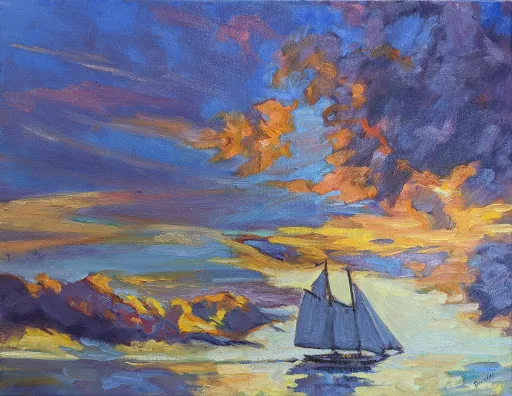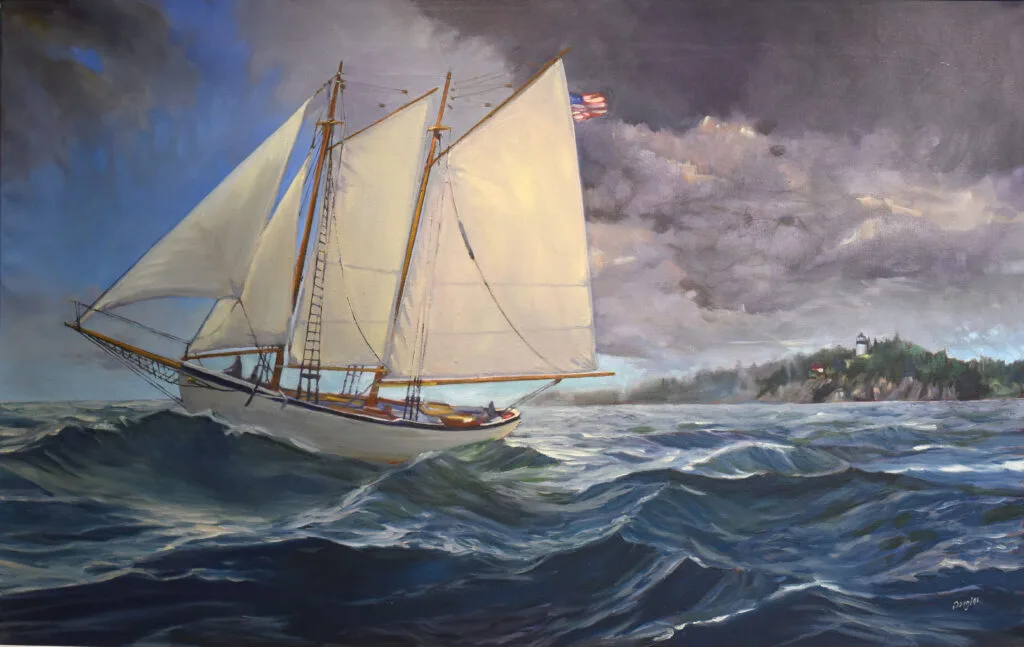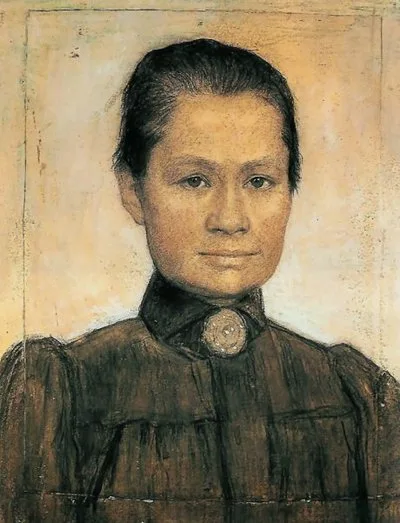We like certainty, but plans are to some extent illusory; things can and do change in an instant.
 |
| Sunset sail, 16X20, oil on canvas, Carol L. Douglas, available. |
I’ve noticed a strange split this year—my east coast workshops are sold out, and my western ones are languishing. To be completely accurate, my Acadia workshop has sold out 1.5 times, because as people made plane and car reservations, they realized the difficulty and expense of travel to smaller markets. They dropped out and were replaced by others on my waiting list. I’m extremely blessed to have had a waiting list.
That list is now exhausted. I have a last-minute opening at my Acadia Sea & Sky workshop (July 31-August 5, 2022), because one of my students is waiting on a nitrogen oxide sensor and microchip for his GM truck. As GM has nearly 100,000 vehicles sitting in lots waiting for microchips, my optimism is dimming. I told him I’d ask if anyone wants his seat, so if you’re interested in a last-minute jaunt to Maine, let me know.
 |
| Owl's Head Early Morning, 8X16, oil on canvas, available. |
This strange year, by the way, is not limited to just me, or to the painting workshop market. I’ve talked to people across the tourist industry in England and Maine and heard much the same laments. There’s an international labor shortage and things are still topsy-turvy from COVID.
It’s not that business is down—it’s not—it’s that it’s spotty and weird. We each have our own explanation. I’m hearing a lot about travel concerns, particularly the cost of rental cars. Another teacher says Zoom is killing his workshops. It’s easier to stay home and learn on one’s laptop.
 |
| Skylarking 2, 18X24, oil on linen, available. |
At this point in the summer, my workshop schedule should be set in stone, but instead I’ve been dithering about my western workshops. After much agonizing (and advertising) I’ve decided to cancel Steamboat Springs and Cody.
That leaves only Gateway to the Pecos Wilderness, August 28-September 2. I kept it because it’s accessed through a major airport (Albuquerque), where I’ve found car rentals to be manageable.
Equally importantly, Our Lady of Guadalupe Abbey, which has inexpensive accommodations, did not burn down in the Hermit’s Peak wildfires this spring. I wish that last sentence was a joke, but this year has been a wild ride.
 |
| Beautiful Dream, 12X16, oil on canvasboard, available. |
Lastly, there’s my second watercolor Age of Sail workshop aboard the schooner American Eagle, September 18-22. Although I’d have said Captain John Foss was irreplaceable, he’s made a mighty good stab at it in his replacement, Captain Tyler King. Tyler has the same equable temperament and top-notch sailing skills as John. When Tyler turns 70, I’ll be 107, and it will be time for both of us to retire.
Change is, of course, an inevitable part of growth, but it’s not easy. We like certainty, but plans are to some extent illusory; things can and do change in an instant. By not traveling so much in September, I’m making room for other opportunities. I can hardly wait!









.jpg)
.jpg)
